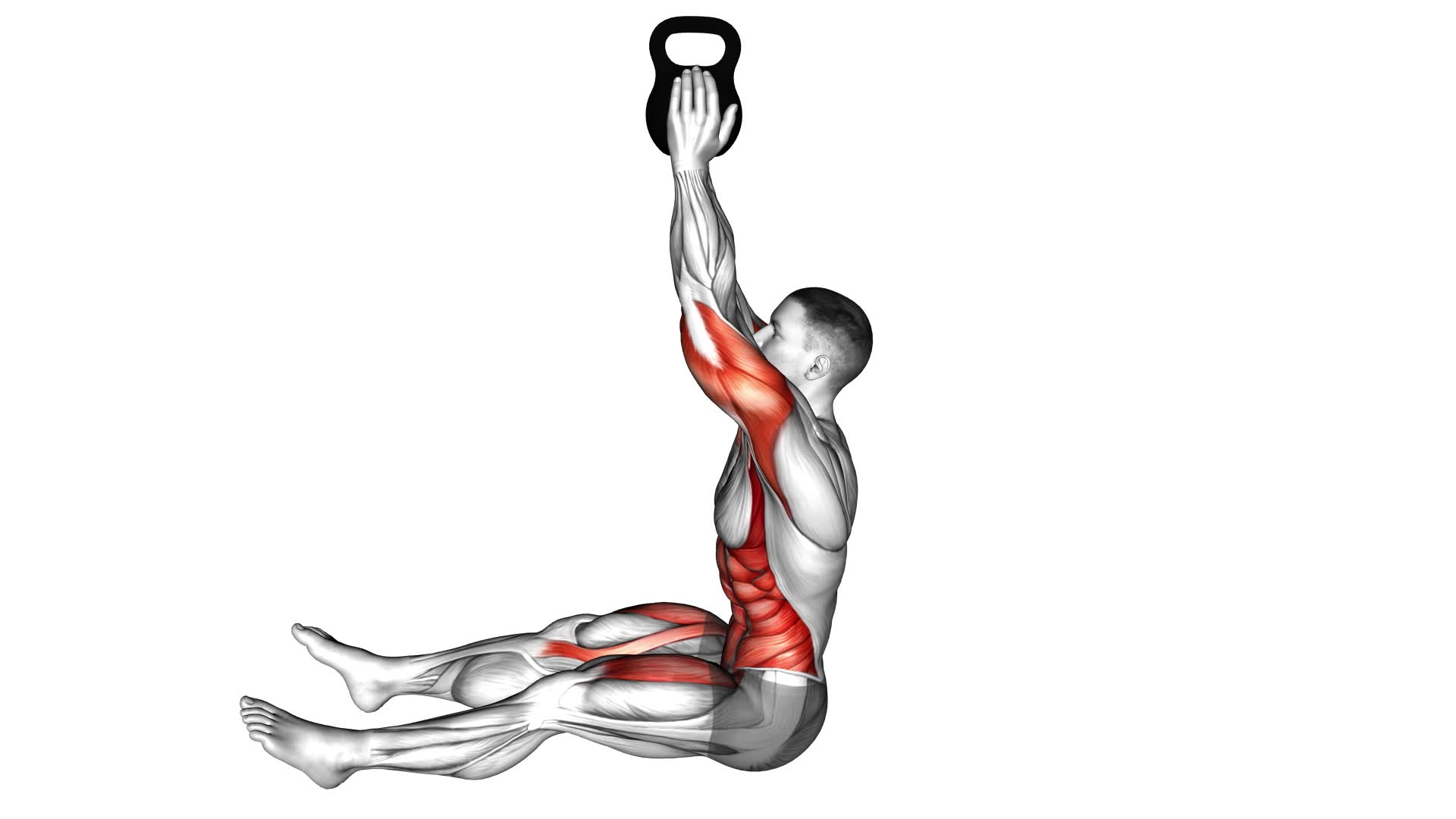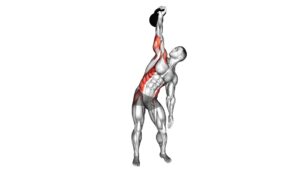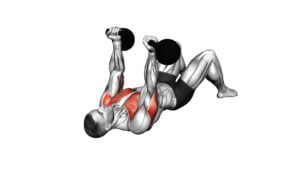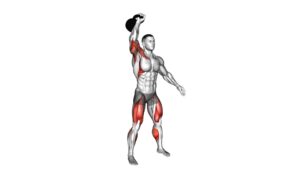Kettlebell Sit-up Press – Video Exercise Guide & Tips

Get ready to strengthen your core with the kettlebell sit-up press! In this video exercise guide, we'll show you the proper technique and provide expert tips for maximizing your results.
Watch This Exercise Video
You'll learn how to select the right kettlebell, maintain correct sitting position, and execute the sit-up press with precision.
We'll also cover common mistakes to avoid and offer progression and variation tips to keep challenging yourself.
Let's dive in and take your core workout to the next level!
Key Takeaways
- Choose the appropriate kettlebell weight based on individual strength and fitness level.
- Maintain a correct sitting position throughout the workout.
- Focus on engaging the entire core during the sit-up press.
- Avoid common mistakes such as using too much weight or arching the lower back.
Proper Kettlebell Selection
Choose the appropriate kettlebell weight based on your individual strength and fitness level. It's crucial to select the right kettlebell weight to ensure proper form and avoid injury during your workout. Kettlebell weight refers to the amount of resistance or load that the kettlebell provides. The weight you choose should challenge your muscles without compromising your technique. Keep in mind that proper form is essential for maximizing results and minimizing the risk of injury.
To determine the appropriate kettlebell weight for you, start with a lighter weight and gradually increase as you become more comfortable and confident with your technique. It's recommended to consult with a fitness professional or trainer who can assess your strength and guide you in selecting the right weight. They can also teach you the proper form and technique to ensure you're performing the exercises correctly.
Transitioning into the subsequent section about the correct sitting position, remember that once you have chosen the right kettlebell weight, it's equally important to maintain a correct sitting position throughout your workout.
Correct Sitting Position
Once you have determined the appropriate kettlebell weight, it's important to maintain a correct sitting position throughout your workout to ensure proper form and maximize the effectiveness of the exercise. Correct sitting posture is crucial for the kettlebell sit-up press, as it helps to engage the correct muscles and prevent injury.
To achieve a correct sitting position, start by sitting on a mat with your legs bent and feet flat on the floor. Lean back slightly, keeping your back straight and core engaged. Avoid slouching or rounding your shoulders. Hold the kettlebell close to your chest with a firm grip.
Maintaining proper sitting posture during the kettlebell sit-up press offers several benefits. Firstly, it helps to target and strengthen your core muscles, including the abs, obliques, and lower back. It also improves your balance and stability, as well as enhances your overall posture. By sitting up straight and engaging your core, you'll also be able to generate more power and force during the exercise.
Execution of the Sit-up Press
To perform the sit-up press, start by positioning yourself in a correct sitting posture as described earlier, and hold the kettlebell close to your chest. The sit-up press is a compound exercise that targets multiple muscles in your core and upper body, making it a highly effective movement for building strength and stability.
One of the key benefits of the kettlebell sit-up press is that it engages your entire core, including your rectus abdominis, obliques, and transverse abdominis. This exercise not only helps to strengthen your abs but also improves your overall core stability, which is essential for maintaining proper form during other exercises and daily activities.
To properly engage your core during the sit-up press, focus on maintaining a strong and stable midsection throughout the movement. As you sit up, exhale and contract your abs, pulling your belly button towards your spine. This will help to stabilize your spine and protect your lower back.
Common Mistakes to Avoid
To ensure proper form and maximize the effectiveness of the kettlebell sit-up press, it's important to be aware of and avoid common mistakes. By avoiding these mistakes, you can reduce the risk of injury and maximize your results.
One common mistake to avoid is using too much weight. It may be tempting to grab the heaviest kettlebell available, but using a weight that's too heavy can compromise your form and increase the risk of strain or injury. Start with a lighter weight and gradually increase as your strength and technique improve.
Another mistake to avoid is rushing through the exercise. The kettlebell sit-up press is a compound movement that requires control and proper form. Take your time to engage your core and press the kettlebell overhead in a controlled manner. Rushing through the exercise not only diminishes its effectiveness but also increases the risk of injury.
Lastly, avoid arching your lower back during the sit-up portion of the exercise. This can put unnecessary strain on your lower back and increase the risk of injury. Instead, focus on maintaining a neutral spine throughout the movement.
Tips for Progression and Variation
To continue improving your kettlebell sit-up press and adding variety to your workout routine, consider incorporating different progressions and variations.
Progression modifications can help you gradually increase the difficulty of the exercise while building strength and stability. One way to progress is by increasing the weight of the kettlebell. Start with a lighter kettlebell and gradually work your way up to a heavier one as you become stronger.
Another progression modification is to increase the number of repetitions or sets you perform. This will challenge your endurance and allow you to push yourself further.
Advanced variations of the kettlebell sit-up press can take your workout to the next level. One advanced variation is the single-arm kettlebell sit-up press. Instead of using both arms, you'll only use one arm to perform the exercise. This requires greater stability and strength on one side of your body.
Another advanced variation is the kneeling kettlebell sit-up press. Instead of starting in a seated position, you'll start in a kneeling position. This variation engages your core muscles even more and can help improve your overall stability and balance.
Incorporating progression modifications and advanced variations into your kettlebell sit-up press routine will keep your workouts challenging and prevent plateaus. Remember to always listen to your body and progress at a pace that's comfortable for you.
Frequently Asked Questions
How Many Calories Does the Kettlebell Sit-Up Press Burn?
The kettlebell sit-up press is a great exercise for calorie burning and overall fitness. By combining a sit-up motion with the added resistance of a kettlebell, you engage multiple muscle groups and increase the intensity of the exercise.
This leads to a higher calorie burn and greater benefits for your core, shoulders, and arms. Incorporating this exercise into your routine can help you achieve your fitness goals more efficiently.
Can the Kettlebell Sit-Up Press Be Modified for Beginners?
Modified variations of the kettlebell sit-up press can be beneficial for beginners. By starting with lighter weights or using bodyweight only, you can gradually build strength and improve your form.
Beginners' modifications may include performing the exercise with your feet anchored or using a stability ball for added support. These modifications allow beginners to focus on developing core stability and proper technique before progressing to more advanced variations of the kettlebell sit-up press.
Is It Necessary to Warm up Before Performing the Kettlebell Sit-Up Press?
Before performing the kettlebell sit-up press, it's necessary to warm up to prevent injury and improve your performance. Warming up increases blood flow to your muscles, making them more flexible and ready for the exercise. It also helps to activate the core muscles, which are essential for stability during the sit-up press.
To improve your form, focus on keeping your back straight, engaging your abs, and pressing the kettlebell overhead in a controlled manner.
How Often Should the Kettlebell Sit-Up Press Be Incorporated Into a Fitness Routine?
Incorporating the kettlebell sit-up press into your fitness routine has many benefits. It helps strengthen your core, shoulders, and arms while also improving your stability and balance.
To progress in the exercise, you can increase the weight of the kettlebell or perform more repetitions.
As for how often to include it in your routine, aim for 2-3 times a week to allow for proper rest and recovery.
Are There Any Alternative Exercises That Can Be Done Instead of the Kettlebell Sit-Up Press?
If you're looking for alternative exercises to the kettlebell sit-up press, there are a few options you can try.
One is the traditional sit-up with a dumbbell press, which targets your core and upper body.
Another option is the Russian twist with a medicine ball, which helps improve rotational strength.
Both of these exercises provide similar benefits to kettlebell training, such as building strength and improving stability.
Don't be afraid to mix it up and find what works best for you!
Conclusion
In conclusion, the kettlebell sit-up press is an effective exercise that targets multiple muscle groups and improves core strength. By following the proper technique and avoiding common mistakes, you can maximize the benefits of this exercise.
Remember to start with the right kettlebell weight and maintain correct sitting position throughout the movement. As you progress, you can also incorporate variations to challenge your muscles further.
With consistent practice and proper form, you can achieve great results with the kettlebell sit-up press.

Author
Years ago, the spark of my life’s passion ignited in my mind the moment I stepped into the local gym for the first time. The inaugural bead of perspiration, the initial endeavor, the very first surge of endorphins, and a sense of pride that washed over me post-workout marked the beginning of my deep-seated interest in strength sports, fitness, and sports nutrition. This very curiosity blossomed rapidly into a profound fascination, propelling me to earn a Master’s degree in Physical Education from the Academy of Physical Education in Krakow, followed by a Sports Manager diploma from the Jagiellonian University. My journey of growth led me to gain more specialized qualifications, such as being a certified personal trainer with a focus on sports dietetics, a lifeguard, and an instructor for wellness and corrective gymnastics. Theoretical knowledge paired seamlessly with practical experience, reinforcing my belief that the transformation of individuals under my guidance was also a reflection of my personal growth. This belief holds true even today. Each day, I strive to push the boundaries and explore new realms. These realms gently elevate me to greater heights. The unique combination of passion for my field and the continuous quest for growth fuels my drive to break new ground.







